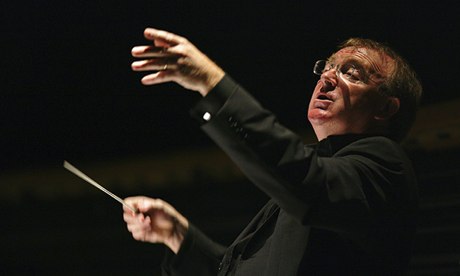
Southbank Centre's year-long celebration of the 20th century, The Rest is Noise, took more than six months to reach the second world war, and now it has less than half as long to deal with developments after 1945. Though the coverage of those hugely diverse 55 years is likely to be as sketchy as it is in the book that inspired the whole project, Southbank's weekend devoted to the European avant garde of the 1950s did include performances of some landmark works, and ended with Karlheinz Stockhausen's Gruppen for three orchestras.
Performances of Gruppen are always events. It may not be the composer's greatest work, but it is certainly one of his most iconic, and it is one of the pieces (like Boulez's Pli selon Pli) that epitomised the ambition of the postwar avant garde. For this performance, the London Sinfonietta joined forces with the Royal Academy of Music's Manson Ensemble to create three ensembles; Martyn Brabbins, Baldur Brönnimann and Geoffrey Paterson conducted the three groups, sending the music spinning across the hall and occasionally coalescing into intense climaxes.
Gruppen opened and closed the concert; the second performance was just a little more fluent and relaxed, and the percussion seemed less overbearing. But it was the pair of works in between that left a bigger impression. Brabbins and the Sinfonietta played two of Luigi Nono's pieces from the same era, Polifonica-Monodia-Ritmica of 1951 and Canti per 13, composed four years later. Both are beautifully crafted essays in the total serial language that Nono developed from Anton Webern; personal rather than self-consciously public statements, they seemed worlds away from the gestural grandiloquence of Gruppen.
Broadcast in Radio 3's Hear and Now on 19 October. The Rest is Noise continues at Southbank Centre until December. Box office: 0844 847 9913.
• Did you catch this show – or any other recently? Tell us about it using #gdnreview

